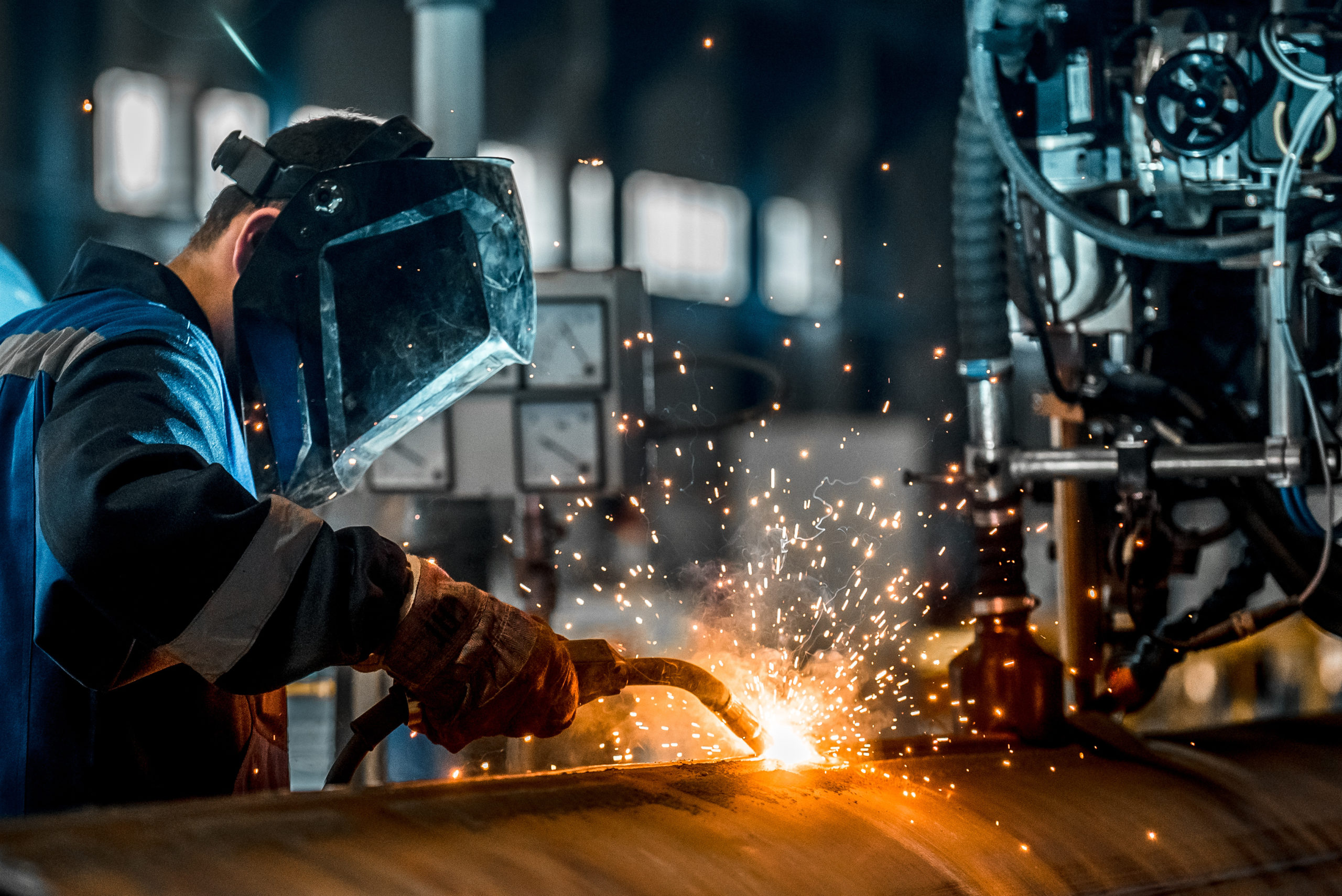All Concerning Welding: Trick Insights Into Techniques and Ideal Practices for Success
Welding includes a variety of methods, each matched for specific products and applications. Understanding these techniques, such as GMAW, SMAW, and TIG, is crucial for accomplishing suitable outcomes. Furthermore, the right tools and safety and security techniques can not be forgotten. As preparation and troubleshooting play important functions in the welding process, understanding these components can considerably boost the top quality of the last product. What are the vital factors that ensure an effective weld?
Recognizing Different Welding Strategies
Welding techniques incorporate a variety of approaches, each matched to particular applications and products. Amongst the most typical methods are Gas Metal Arc Welding (GMAW), Shielded Metal Arc Welding (SMAW), and Tungsten Inert Gas Welding (TIG) GMAW, additionally known as MIG welding, is popular for its speed and versatility, making it optimal for thin products. SMAW, or stick welding, is favored for its simplicity and efficiency in exterior environments, especially with thicker metals. TIG welding supplies accuracy and control, making it suitable for elaborate job and non-ferrous metals (Belgrade Fabrication). Each technique has its special advantages and considerations, enabling welders to pick the most effective method based upon the project's demands, material kind, and preferred results. Comprehending these techniques is important for effective welding
Vital Welding Devices and Devices
While numerous welding strategies call for specific abilities, the best tools and tools are just as important for accomplishing top quality outcomes. Vital welding tools includes welding devices, which differ depending on the technique-- such as MIG, TIG, or stick welding. Safety equipment, including handwear covers, aprons, and headgears, warranties safety and convenience during the process. On top of that, components and clamps help protect materials in position, guaranteeing precision in welds. Consumables like welding rods, wire, and protecting gas are likewise important parts that affect the quality of the weld. In addition, devices such as mills and cutters promote surface area preparation and post-weld completing, adding to an expert result. Purchasing high-quality equipment ultimately boosts the performance and effectiveness of welding projects.
Safety And Security Practices in Welding
Appropriate security techniques are vital in the welding sector to shield workers from prospective hazards. Welders need to put on suitable individual protective devices (PPE), consisting of headgears with correct shading, handwear covers, and flame-resistant clothing. Ample ventilation is vital to minimize direct exposure to unsafe fumes and gases created during the welding process. In addition, workers should be learnt the appropriate handling of welding tools to protect against mishaps. Fire safety and security procedures, such as maintaining combustible materials away from the welding location and having fire extinguishers easily offered, are needed. Normal assessments of equipment and offices can help recognize possible hazards before they result in crashes. By adhering to these security techniques, welders can create a much safer working environment and reduce dangers associated with their profession.
Readying Products for Welding
Preparing materials for welding is an essential action that considerably influences the high quality and stability of the end product (Fabrication). Appropriate prep work entails cleansing the surface areas to eliminate pollutants such as dirt, oil, and corrosion, which can endanger the weld. Techniques such as grinding, sanding, or using solvents are typically utilized to accomplish a clean surface. Furthermore, ensuring that the products mesh comfortably is vital; spaces can lead to weak welds. It's also crucial to think about the positioning and positioning of the parts, as this will influence the simplicity of welding and the final result. Lastly, picking the appropriate filler product and guaranteeing compatibility with the base steels is important for accomplishing solid, durable welds
Tips for Getting High-Quality Welds
Attaining premium welds requires attention to information and adherence to best techniques throughout the welding process. Appropriate joint prep work is crucial, making sure surface areas are free and clean from impurities. Choosing the suitable filler product and welding method based on the base steels is crucial for excellent bonding. Keeping regular travel rate and angle while welding can advertise and avoid defects harmony. Additionally, controlling warm input is essential; too much warmth can result in bending and deteriorated joints. If required, consistently evaluating the welds throughout the process permits for instant modifications. Utilizing appropriate post-weld therapies, such as cleaning and stress alleviation, can boost the longevity and integrity of the weld, ultimately making certain a successful end result.
Repairing Usual Welding Issues
Welding usually provides challenges that can influence the high quality and integrity of the last item. Typical issues such as porosity, inconsistent weld grains, and overheating can occur, each calling for particular repairing techniques. Understanding these problems is necessary for welders to boost their abilities and accomplish perfect outcomes.
Porosity Problems Explained
Although porosity can frequently be overlooked, it continues to be an essential concern in welding that can endanger the honesty of an ended up product. Porosity describes the existence of little gas pockets within the weld bead, which can compromise the joint and lead to premature failing. This issue generally occurs from contaminants, wetness, or improper shielding gas insurance coverage during the welding procedure. To alleviate porosity, welders must verify that the base products are tidy and completely dry, use appropriate protecting gases, and keep constant welding parameters. Routinely checking the tools and atmosphere can additionally aid determine prospective concerns prior to they materialize in the weld. Dealing with porosity successfully is important for accomplishing solid, resilient welds that satisfy top quality standards.

Irregular Weld Beans
Irregular weld beads can he has a good point substantially impact the high quality and toughness of an ended up product. Various variables contribute to this issue, including inappropriate traveling rate, wrong amperage settings, and inconsistent electrode angles. When the welder moves too quickly, a bead might show up narrow and do not have infiltration, while relocating as well gradually can create excessive accumulation. Additionally, using the wrong amperage can cause either damaging or extreme spatter, both of which compromise weld honesty. The welder's method, such as irregular lantern activity, can likewise cause uneven grain look. To alleviate these troubles, welders need to concentrate on maintaining consistent, controlled movements and making sure appropriate tools setups to accomplish uniformity in their welds. Consistency is vital to attaining strong and reputable welds.
Getting Too Hot and Warping Issues
Too much warmth throughout the welding process can lead to significant overheating and deforming concerns, impacting the architectural honesty of the workpiece. These problems frequently materialize as distortion, which can jeopardize alignment and fit-up, making additional assembly challenging. Factors adding to overheating consist of the option of welding parameters, such as voltage and take a trip speed, in addition to the sort of material being bonded. To reduce these concerns, welders should keep regular traveling speed er5356 and suitable warm input while keeping an eye on the work surface temperature. Additionally, preheating or post-weld warm therapy can assist minimize tensions brought on by rapid air conditioning - Welding. Normal evaluation and adherence to best practices are necessary in protecting against overheating and guaranteeing the long life and reliability of welded frameworks
Frequently Asked Inquiries
What Are the Job Opportunities in the Welding Industry?
The welding market uses varied profession chances, including settings as welders, educators, examiners, and engineers. Experts can operate in manufacturing, building, aerospace, and automotive fields, gaining from solid need and competitive salaries in different duties.
How Can I Improve My Welding Rate Without Giving Up Quality?
To improve welding speed without compromising quality, one should practice efficient strategies, maintain devices, optimize setups, and boost hand-eye control. Regular training and seeking comments can additionally greatly add to accomplishing quicker, high-grade welds.
What Accreditations Are Offered for Welders?
Numerous qualifications exist for welders, consisting of those from the American Welding Society (AWS), the National Center for Building ultrasonic welding Education and Research (NCCER), and different industry-specific companies. These qualifications enhance employability and demonstrate skill efficiency.
How Does Welding Impact the Residences of Metals?
Welding affects the buildings of metals by modifying their microstructure, which can lead to adjustments in firmness, strength, and ductility. Warmth input and cooling rates during the process considerably influence these product attributes.
Can I Bonded Dissimilar Metals Together?
